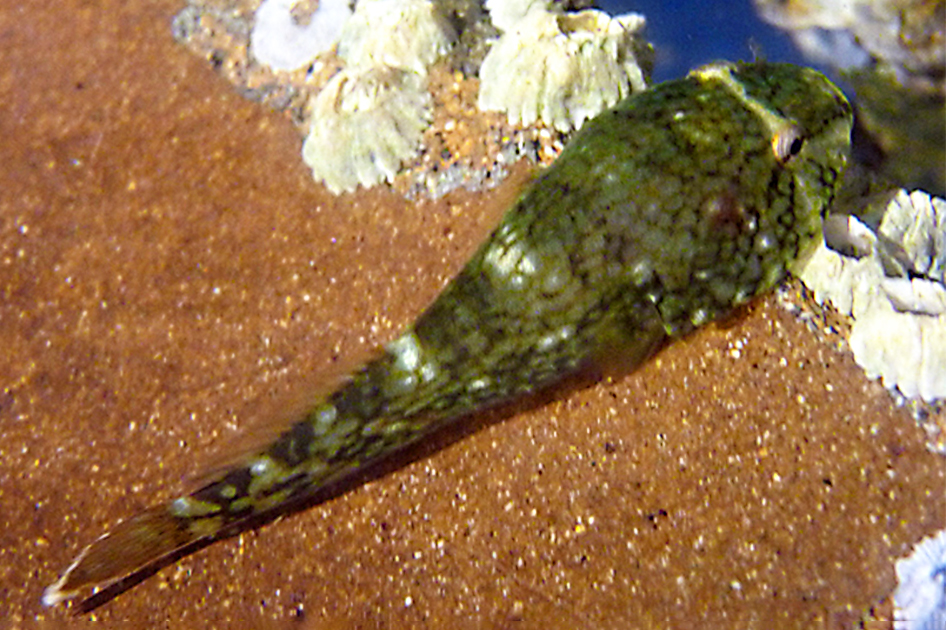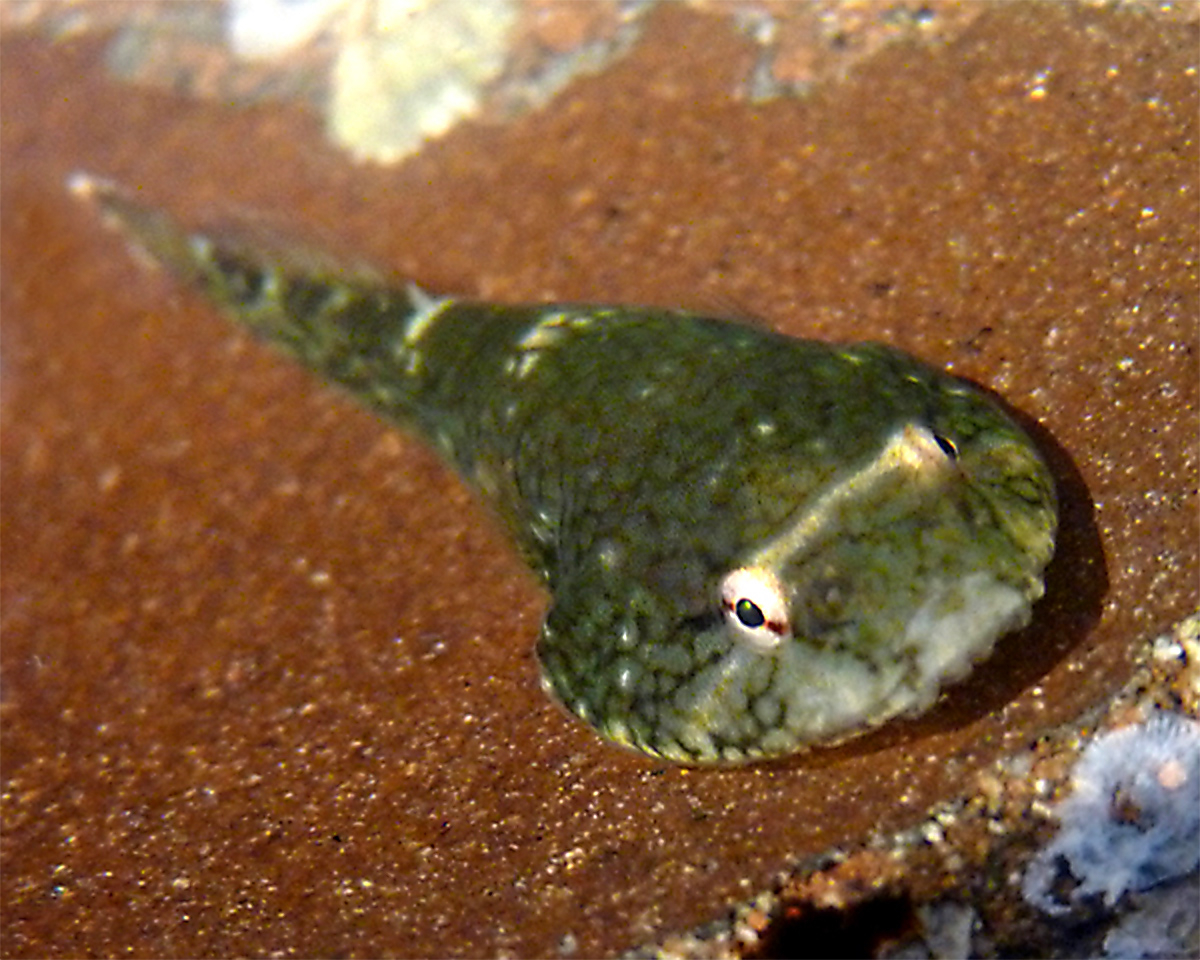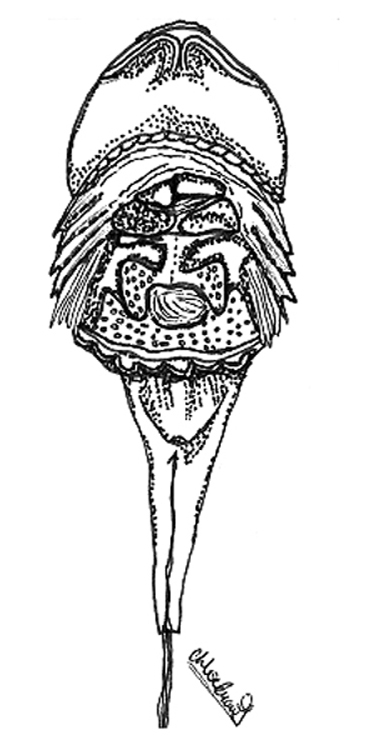Scinetific Name: Gobiesox maeandricus
Size Range: Northern Clingfish are generally 3 inches (7.6 cm) in length but may grow up to 6 inches (15.2 cm). Most males are larger than the females.
Identifying Features: The Northern Clingfish has an unusual shape. It is primarily round, has a slight flat or depressed head, and has a thin tail. It has two yellowish eyes that are far apart at the front of its head. The fish’s skin is smooth and usually olive brown in tone with small red, gray, or yellow spots. There are pectoral fins behind the dorsal fin which is located near the tail of the fish and an anal fin. Around the sucker disc (which acts as a suction cup) are pelvic fins.
Habitat: The Northern Clingfish likes to stay low key and doesn’t like to be seen. It hides within seaweed and is often found stuck under rocks in tidal pools or on rocky shores in the intertidal zone. The clingfish is often found among species of fish including gunnels, and sculpins.


Food: The clingfish generally eats small crustaceans like shrimp and small mollusks. It may prey on limpets or chitors. Its mouth and sucker disk are adapted for hunting. While its prey (limpet) is on the rock it stays stable with its sucker disk and with its mouth pries the limpet off the rock. The clingfish is an aggressive feeder and in artificial habitat will quickly take food or bite your finger. Clingfish can be cannibals as they will eat their own kind.
Predators: The clingfish blends in with its surroundings making it hard for predators to attack. However, at low tides, these fish cling to rocks which are over turned by gulls and raccoons that forage close to shore and eat them.
Life Cycle: In the spring the mother clingfish lays her eggs under a rock that she thinks will be safe. Then the male comes along and squirts his sperms and voila most of the eggs are fertilized and you have baby clingfish. A baby clingfish starts off as small platonic larvae, and then it will begin developing. During this time the male protects the babies. Most often the babies will stay near the rocks even though they are very curious.
Illustration by Chloe Browett
Photos by D. Young
REFERENCES:
Kozloff, E. (1993). Seashore life of the northern Pacific coast: An illustrated guide to Northern California, Oregon, Washington, and British Columbia. Seattle, Washington: University of Washington Press


